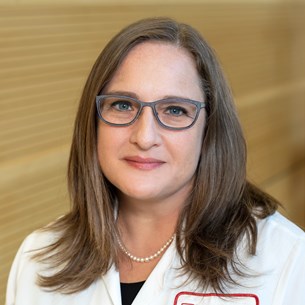Meeting
2022 ASCO Annual Meeting

Fox Chase Cancer Center, Philadelphia, PA
Elizabeth R. Plimack , Catherine Tangen , Melissa Plets , Rutika Kokate , Joanne Xiu , Chadi Nabhan , Eric A. Ross , Erin Grundy , Woonyoung Choi , Colin P.N. Dinney , I-Ling C. Lee , Scott Lucia , Thomas W. Flaig , David James McConkey
Background: SWOG S1314 (NCT02177695) was designed to validate the CoXEN classifier as a predictive biomarker in pts undergoing cystectomy after NAC. We repurposed banked DNA samples and prospective trial data from S1314 to further validate the predictive ability of the Philadelphia 4 gene signature (P4GS: any mutation in ATM, RB1, FANCC, ERCC2) to predict pT0 as previously reported (PMID: 26238431) and used in the RETAIN trial (NCT02710734). The RETAIN trial prospectively enrolled pts to receive NAC (DDMVAC) followed by allocation to bladder observation vs. intervention (cystectomy or RT) based on clinical evaluation and presence vs absence of P4GS. The primary objective of this correlative investigation was to determine whether presence of P4GS is predictive of pT0 at surgery. Methods: Eligibility for S1314 included cT2-T4a N0 M0 MIBC, cisplatin eligible, with plan for cystectomy; 237 pts were randomized between ddMVAC and gem/cis (GC) using standard dose/schedule. Of 167 pts who were evaluable for the original COXEN analysis (received 3+ cycles of chemo and evaluable for path response) adequate banked DNA was available for 105. Next-generation sequencing using the CARIS 592 Gene Panel (Caris Life Sciences, Phoenix, AZ) was performed. Pathogenic mutation or VUS of ATM, RB1, FANCC or ERCC2 was noted as present or absent for each pt and correlated with pT0 using logistic regression, adjusting for clinical stage. Results: Among the 105 pts, 51% ddMVAC, 49% GC. 15% female, 95% white, 15% clinical stage T3/T4a Prevalence of mutations: ATM (24%), ERCC2 (17%), FANCC (4%), RB1 (24%) and any variant 53%. Presence of any mutation correlated with pT0 (p = 0.0006), sensitivity 79%, specificity 59%. This association did not vary by treatment arm (MVAC vs. GC). The table below shows the contributions of each of the 4 genes with the greatest contribution from ATM and ERCC2. FANCC was non-contributory due to low prevalence. Conclusions: Patients with a mutation in ATM, RB1, FANCC or ERCC2 (P4GS) have a statistically significantly higher odds of a pT0 with GC or MVAC compared to those who do not have any variant. This signature was used to prospectively allocate patients to bladder observation as part of the RETAIN trial previously reported (ASCO GU 2021). RETAIN completed enrollment, final analysis of the primary endpoint – 2-year metastasis free survival – is expected later in 2022. Clinical trial information: NCT02177695.
Disclaimer
This material on this page is ©2024 American Society of Clinical Oncology, all rights reserved. Licensing available upon request. For more information, please contact licensing@asco.org
2022 ASCO Annual Meeting
Poster Session
Genitourinary Cancer—Kidney and Bladder
Genitourinary Cancer—Kidney and Bladder
Urothelial Cancer - Local-Regional Disease
NCT02177695
J Clin Oncol 40, 2022 (suppl 16; abstr 4581)
10.1200/JCO.2022.40.16_suppl.4581
4581
72
Abstract Disclosures
2023 ASCO Genitourinary Cancers Symposium
First Author: Matt D. Galsky
2023 ASCO Genitourinary Cancers Symposium
First Author: Matt D. Galsky
2023 ASCO Genitourinary Cancers Symposium
First Author: Daniel M. Geynisman
2019 ASCO Annual Meeting
First Author: Benjamin Miron